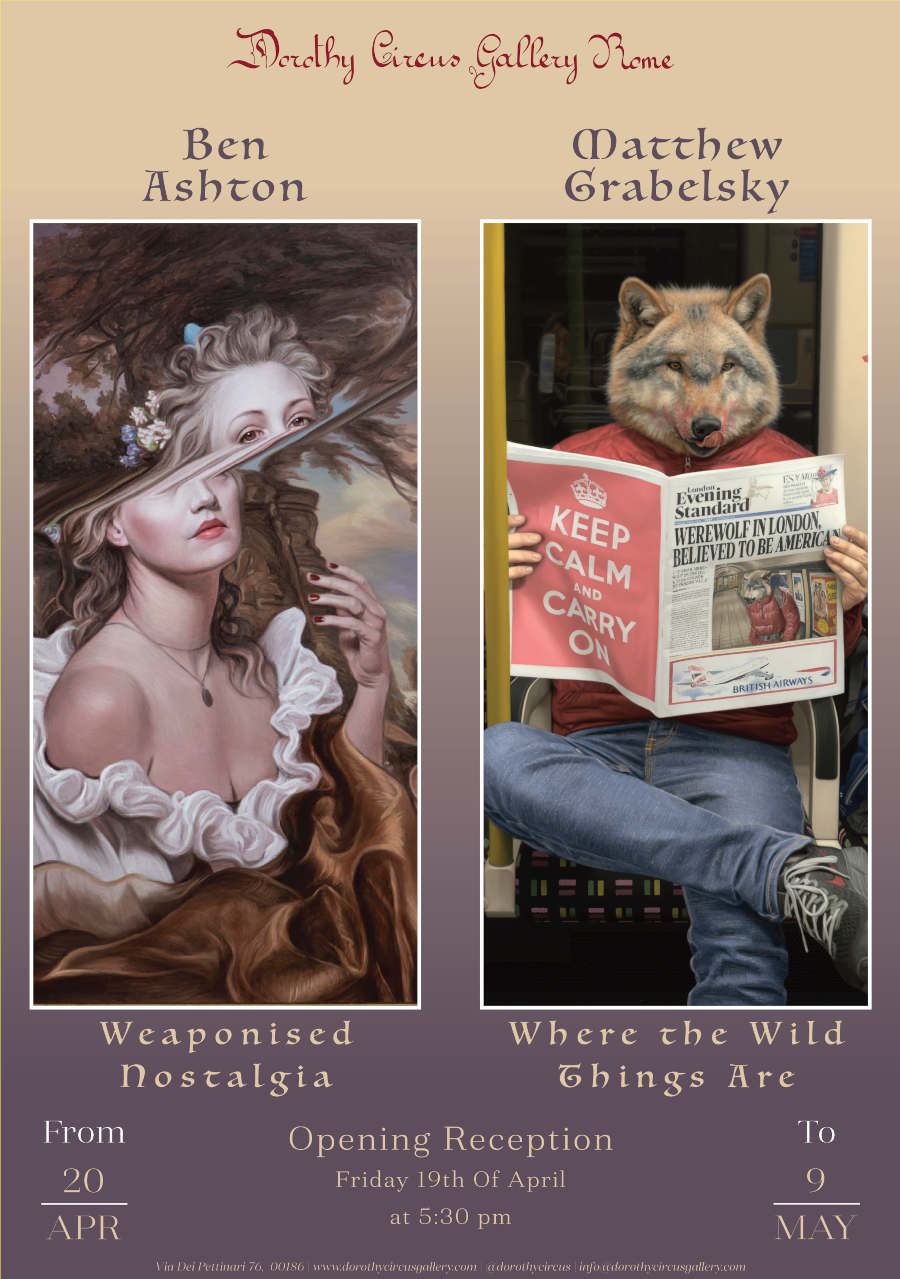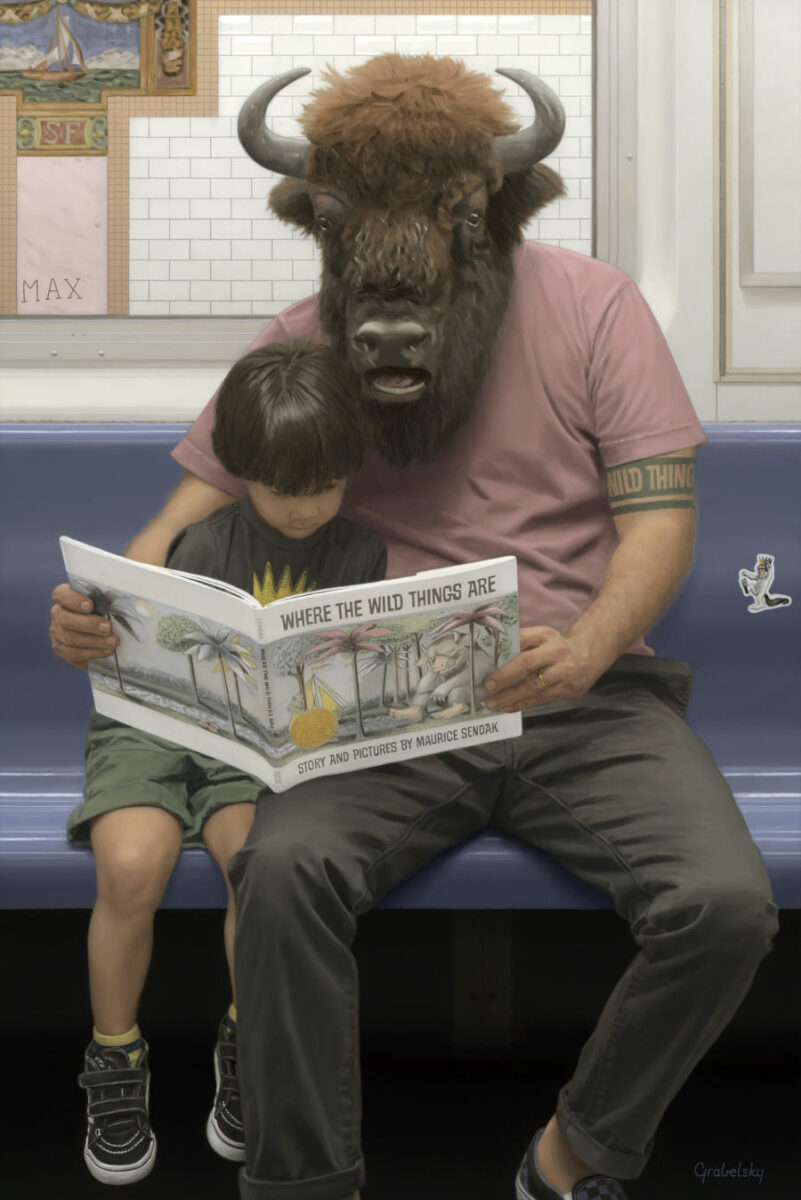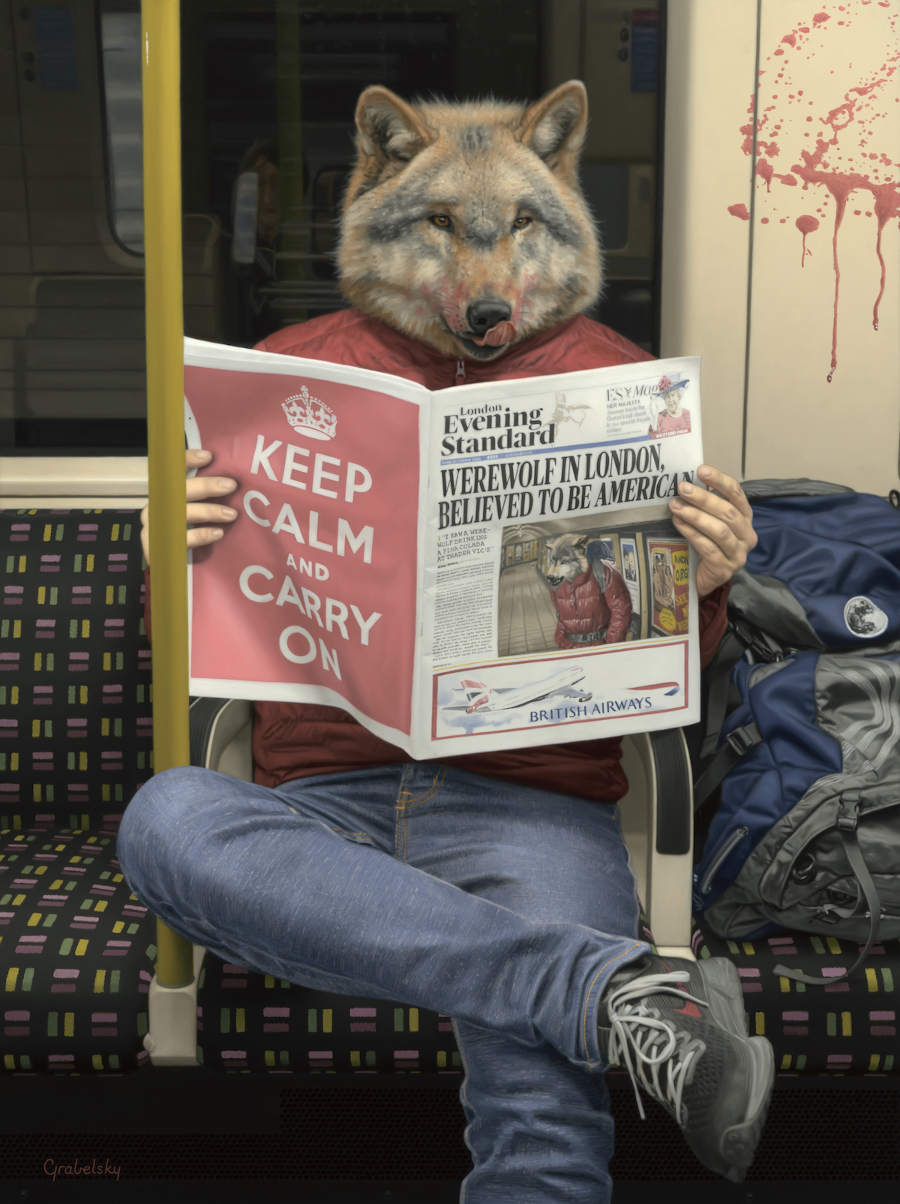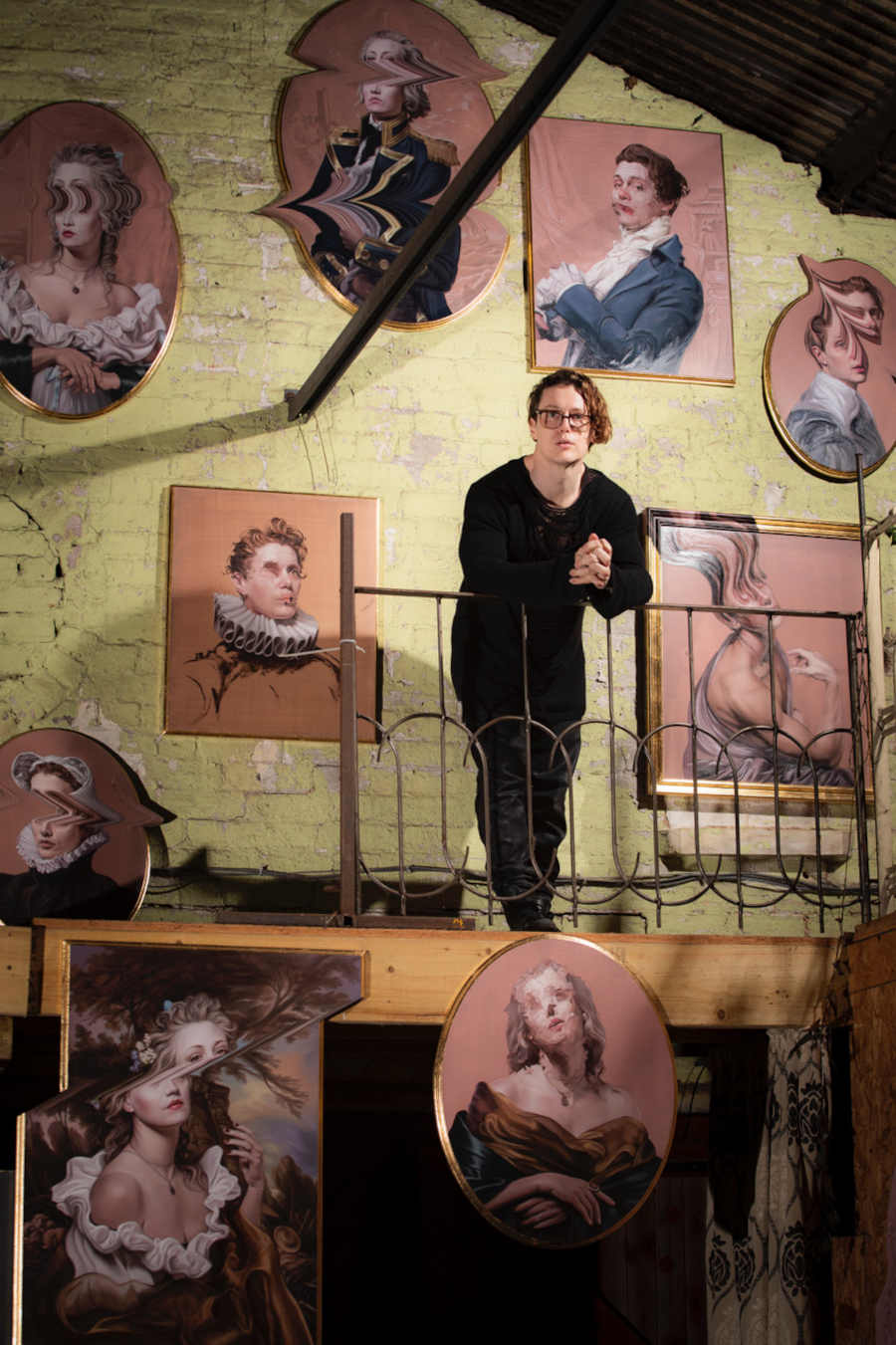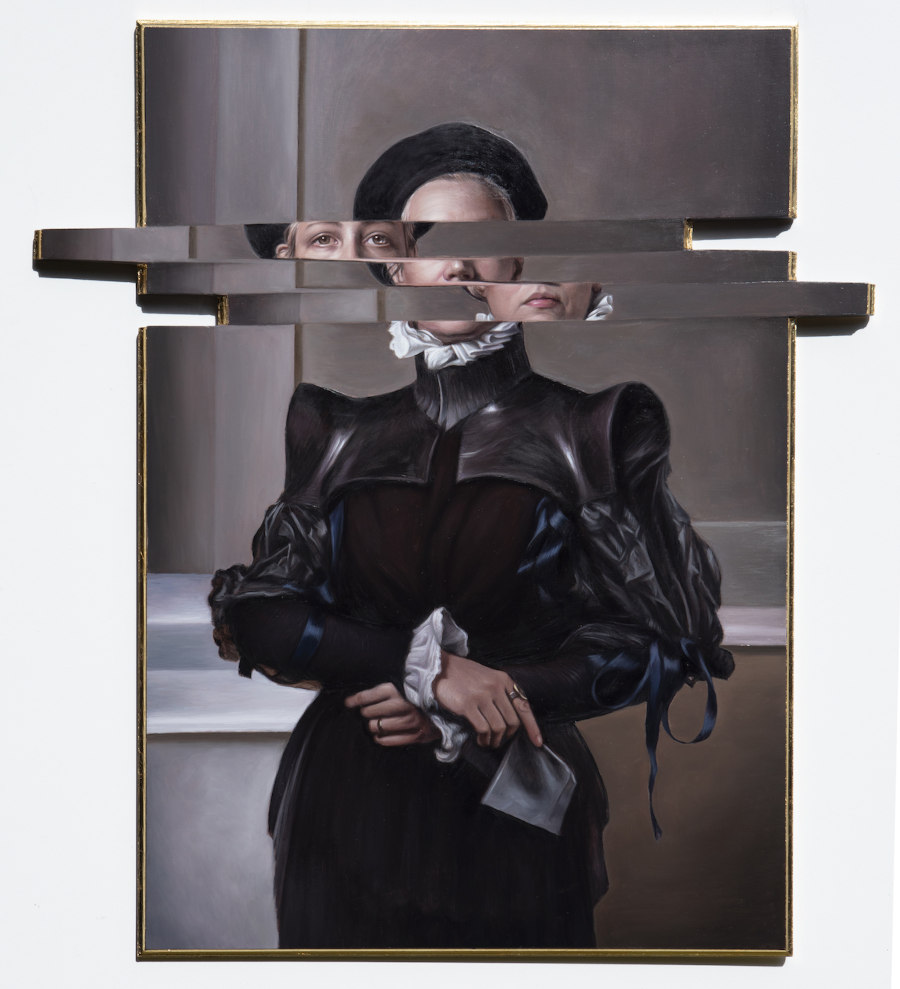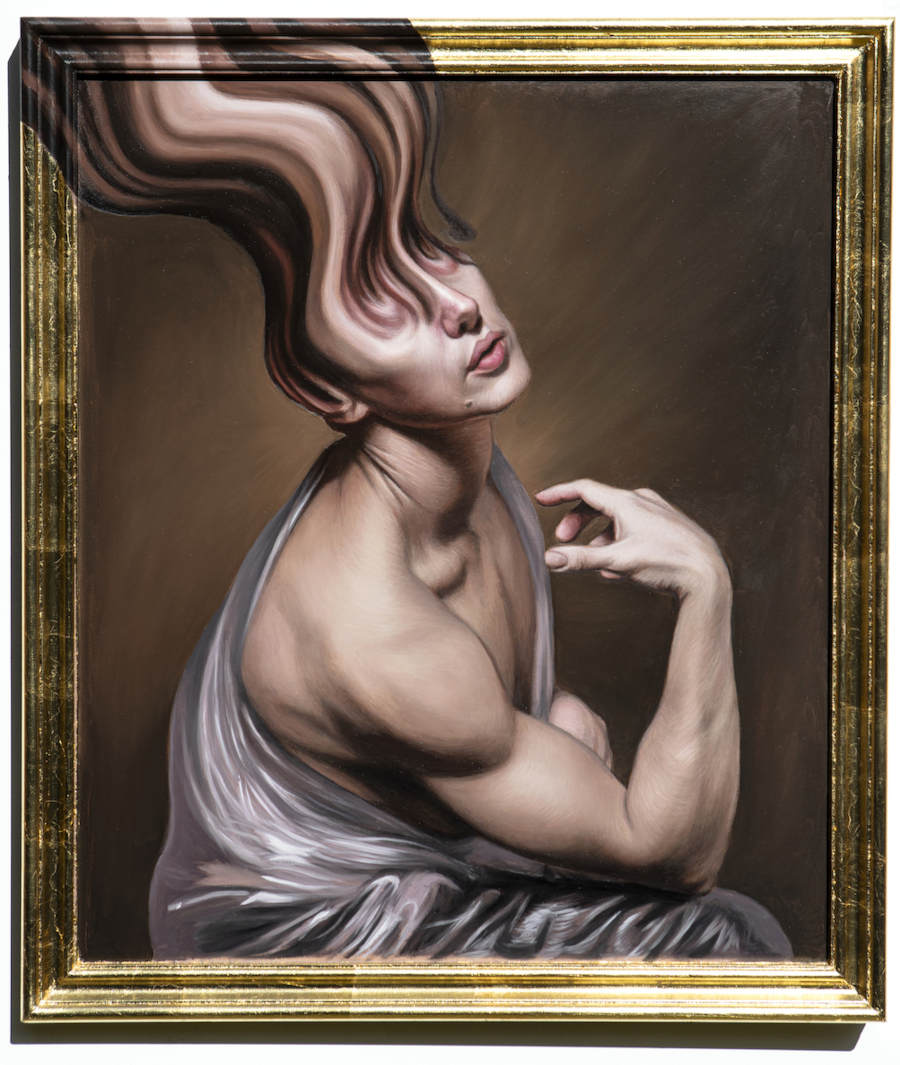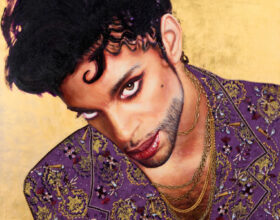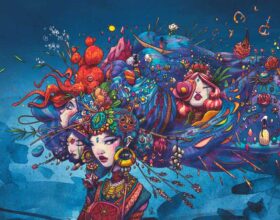Do you enjoy portraiture with a playful twist? A space where alternate realities meet realism in contemporary art? If you are looking for a show which shakes the foundations of portraiture, Dorothy Circus Gallery Rome have the perfect event to titillate your optic nerves and get those neurons firing. Opening this Friday April 19th, Ben Ashton and Matthew Grabelsky will both be in attendance to each unveil their new series of eight paintings which, in their diversely unique styles, both challenge conventional notions of figurative art.
We interviewed them below to find our more.
Ben Ashton: “Weaponised Nostalgia”
Matthew Grabelsky: “Where the Wild Things Are”
Dorothy Circus Gallery Rome
Via dei Pettinari 76, 00186 Rome, ITALY
Phone: +44 (0) 755 192 9124
Exhibition Dates: 19th April 2024 – 11th May 2024
Opening reception: Friday April 19th, 5.30pm – both artists will be in attendance!
Gallery opening hours: Tuesday to Saturday | 11:30 -18:30. As per DCG policy, visits will be by appointment only. For more information, email Dorothy Circus Gallery at [email protected]
Matthew Grabelsky: ‘Where the Wild Things Are’
About Matthew Grabelsky, from press release //
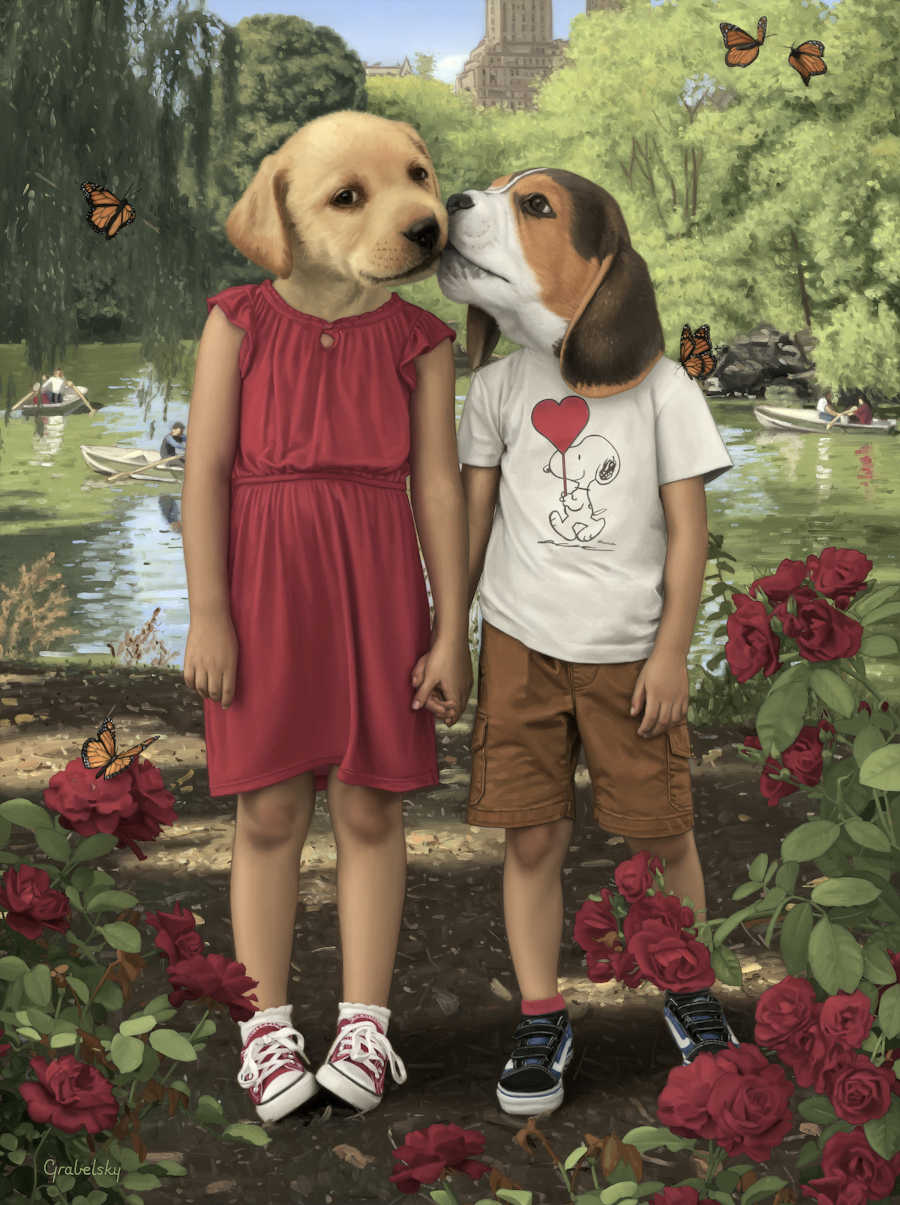
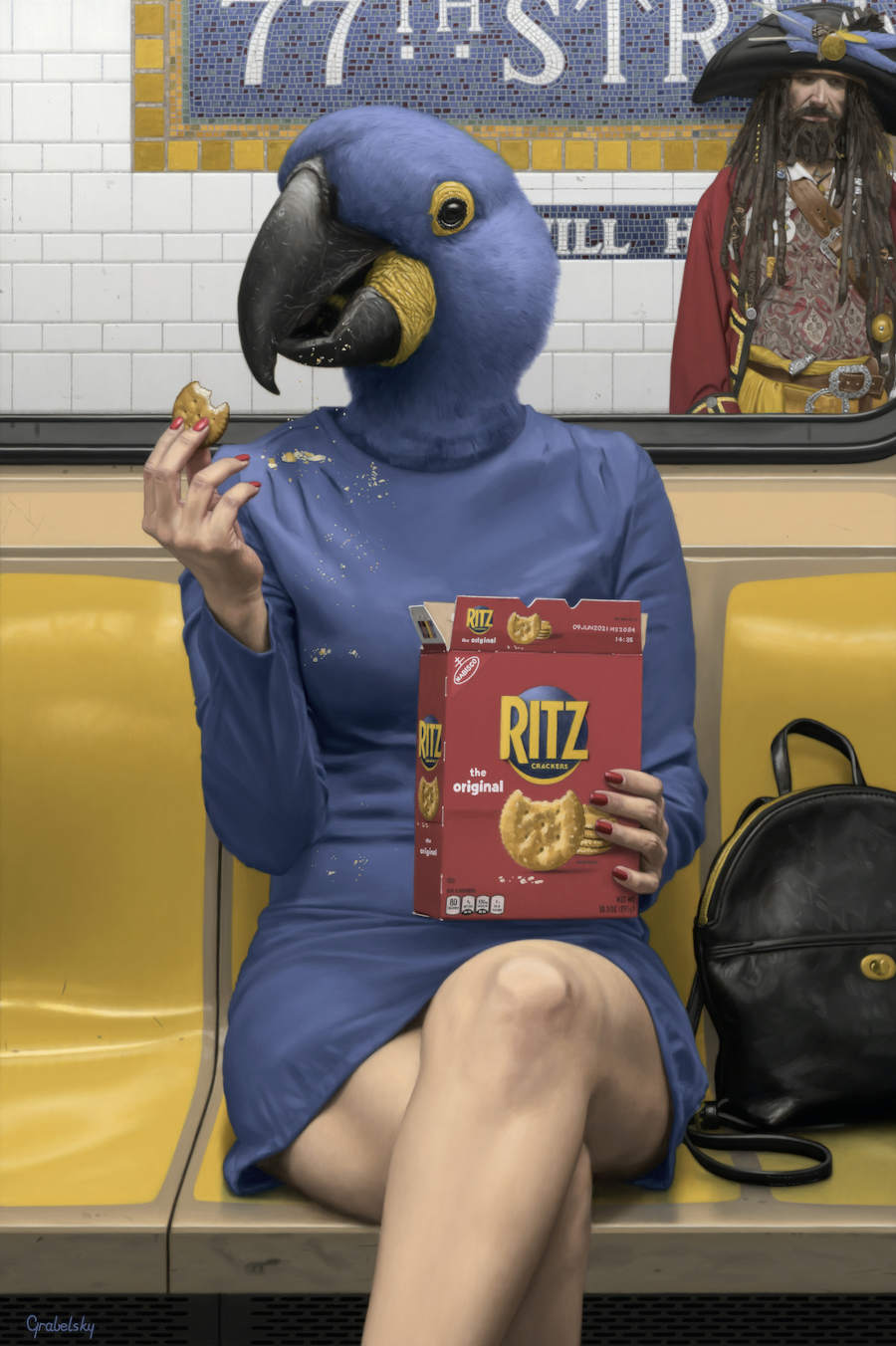
Matthew Grabelsky is a Los Angeles-based artist who graduated both in Astrophysics and Art & Art History at Rice University in Houston. After graduation, he moved to Florence to study European oil painting techniques followed by number of years living between New York And Paris. These experiences inspired him to create his contemporary quasi-mythological human-animal hybrid characters.
With his new show “Where the Wild Things Are,” Matthew Grabelsky takes us on a journey through the NYC subway, a world beneath the world, where his subjects – almost mythologically referenced creatures with human bodies and animal heads – are the embodiment of our inner self, our hidden subconscious brought to life on canvases expertly painted by Grabelsky with a refined technique and classical inspiration.
Matthew Grabesky Interview
I’ve read that your animal series grew from the seeds of earlier paintings involving mythology. What is it about painting animals which is so satisfying, rather than merely depicting humans?
Matthew: : I’ve always been fascinated by mythology, especially by the way many mythological characters are almost human but not quite. People with animal heads recur throughout world mythology. These characters fascinate me and I see the animal head as representing something primal and wild about humans.
I love painting people and consider my paintings to be imaginative portraits. The animal heads create something that is both funny and weird. It makes you notice things about the person that you wouldn’t otherwise see, giving you a window into their mind.
Your new series is titled after Maurice Senda’s ‘Where the Wild Things Are’, a deeply influential children’s book which is remembered by a whole generation (or two!) for its fantastical narrative. It feels that this latest series has even more humour embedded within; do you think your creations came out more playful due to the running inspiration of Senda’s book and, perhaps, your own comforting childhood memories related to this? Or did the show’s title in fact come later on?
Matthew: The title came towards the end of getting ready for the show. The last painting I made had a father with the head of a bison reading “Where the Wild Things Are” to his son. This was one of my favourite books as a kid and the fantastical story with its beautiful illustrations had a big impact on the development of my artistic aesthetic. I had several titles for the show. While finishing the painting I realized that the title of Sendak’s book was a perfect fit for it as well as for all the work in the show.
I’ve always liked playing with visual humour and I’ve leaned into it more and more as my work has progressed. I often think about the dichotomy between tragedy and comedy dating back to the Greeks and probably before. So much “serious art” these days seems to focus on tragedy with severe depressing subject matter. While I respect these themes, I feel that the comedy side of art is often underrepresented.
I know you are keen to create open-ended scenes to engage the viewer. Do you have fun planning paintings to encourage a more interactive response, or can it be hard to finalise an idea without being overly didactic with the initial concept which sparked the creation?
Matthew: I always start with an initial idea that makes me laugh. For example, in “Polly Want A Cracker,” I imagined a girl with a parrot head eating crackers. On the subway platform behind her stands a guy dressed as a pirate. I thought this was funny because it referenced the classic saying as well as the association of parrots with pirates. My hope is that viewers will recognize the pop culture references, appreciate the humour, and then fill in more about the story themselves.
From your thoughtfully designed narratives and through to your hyper realistic style, your paintings must take a lot of time. When did you start work on this finally finished series?
Matthew Grabelsky: Sometimes I’ve had ideas for pieces and painted them relatively quickly. Other times they’ve developed over a long period. I worked on most of the paintings in this show on and off for years. I photographed my friend with his son for the piece entitled “Where the Wild Things Are” about eight years ago and it was the last painting I finished. Working this way allowed me to see the paintings with a fresh eye multiple times. This gave me new ideas for elements to add and to refine the pieces until I got them to a point I really liked.

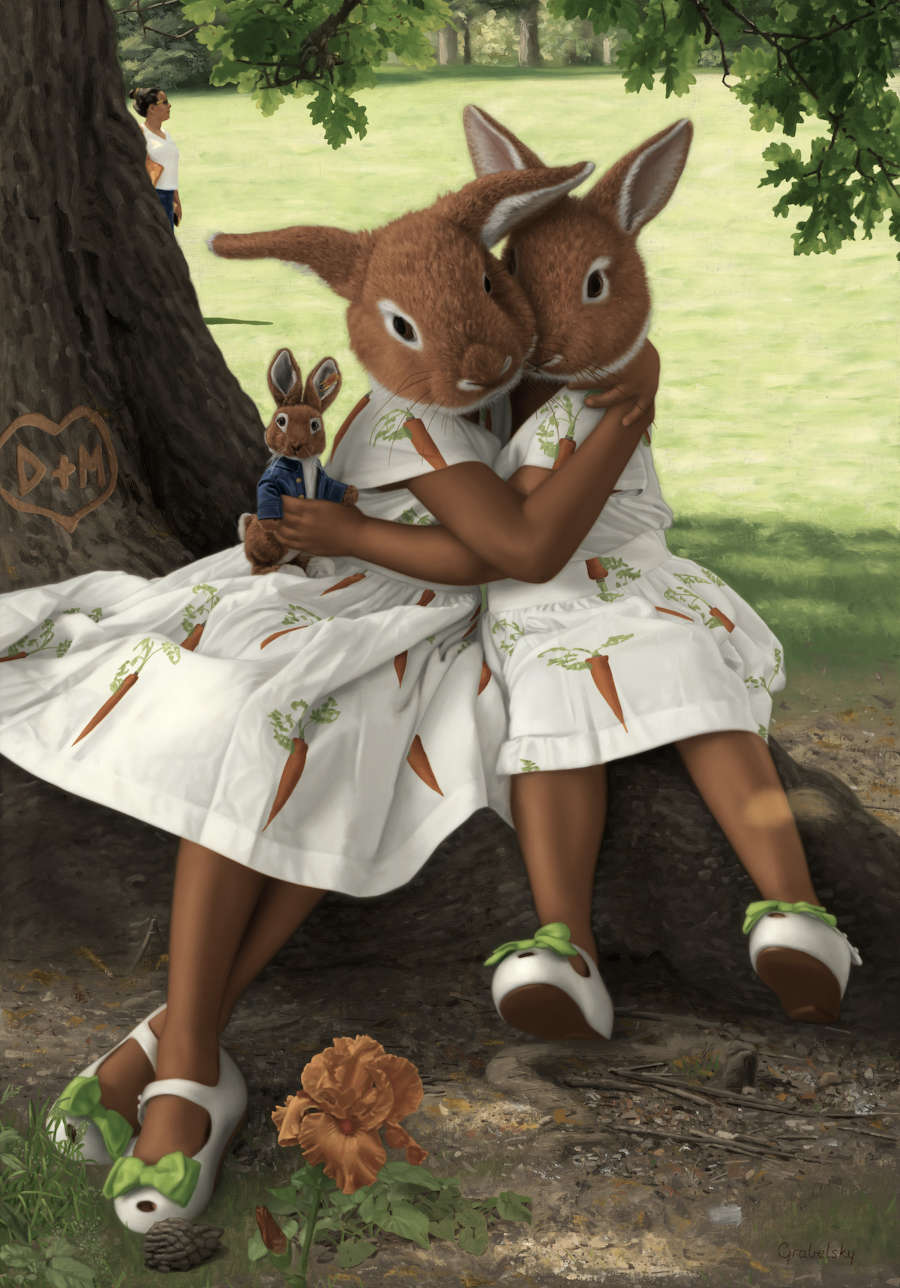
Ben Ashton: “Weaponised Nostalgia”
About Ben Ashton, from press release //
Ben Ashton is a master of subversion, employing fusing evolving technology and self-taught classical techniques to create work that is both beautiful and challenging. Inspired here by the “swagger portraits” of artists such as Thomas Lawrence, Ashton critiques the hypocrisy of contemporary political discourse and its weaponisation of nostalgia. His work emphasises the cyclical nature of history – by drawing on the aesthetics of the past, he finds an outlet for his anxiety over the events of the present day.
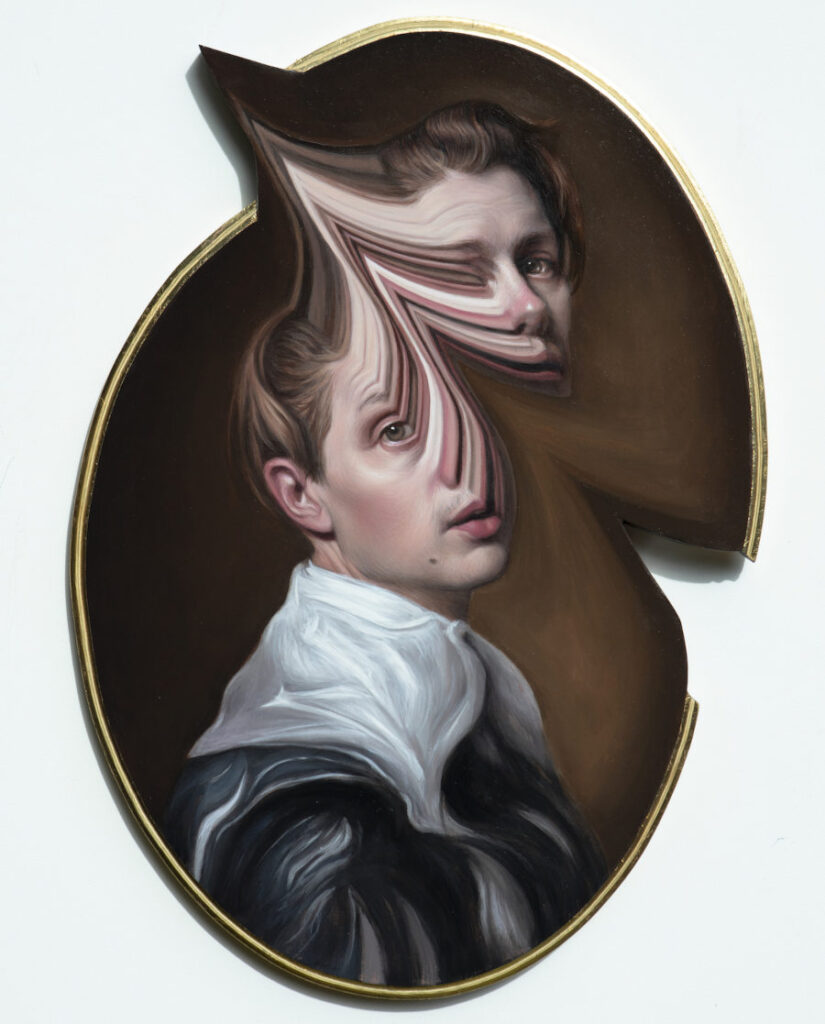
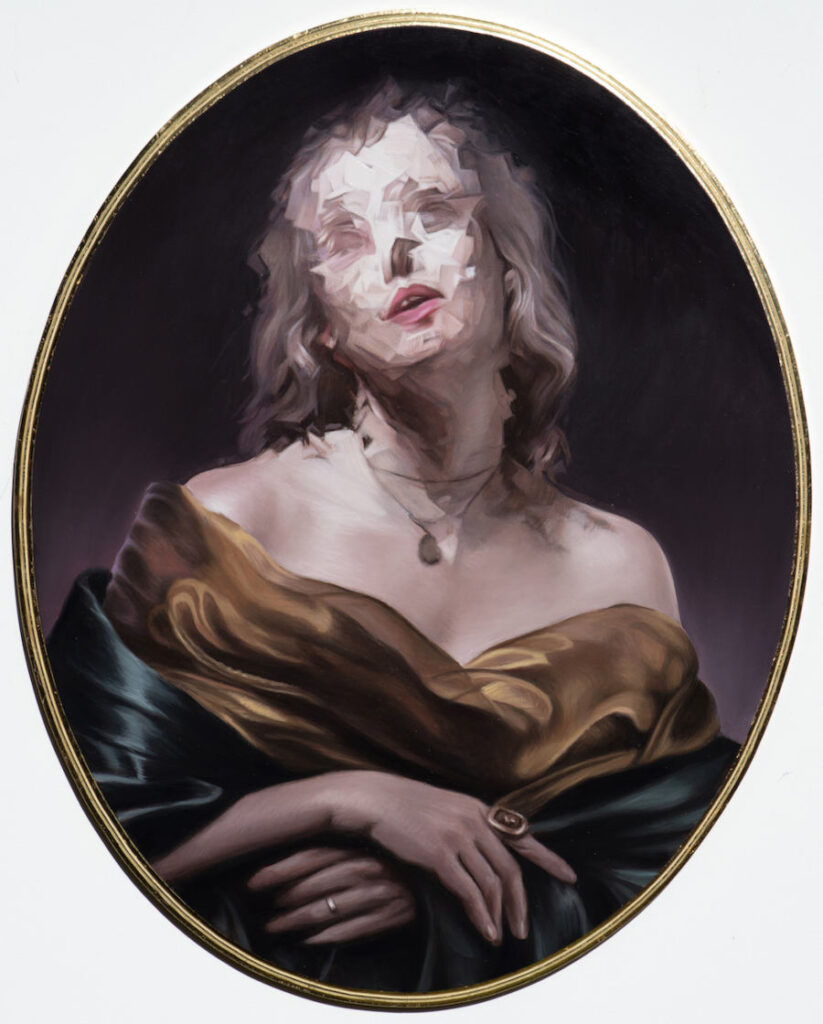
“Weaponised Nostalgia” is a rich stylistic exploration embodying the evolution of this painter, whose research is grounded between the study of classical techniques and the visionary approach typical of contemporary art today, placing a special and recognizable emphasis on the cyclical nature of history. Characterized by intersections and collisions between nostalgia and unconventional abstract urges, in a constant subversion of reality under an almost psychedelic push, Ben Ashton’s more than intriguing works unveil a deep research on classical art and Victorian costume, as much as a profound study of human nature and its sentiments.
Ben Ashton Interview
Being English, I imagine that you’ve grown up enriched first-hand in English and European historical portraiture (it’s pretty hard to avoid!). As a fellow Brit, I find your subversion of classical portraiture refreshing. It captures the traditional beauty, the historical essence, but your distortions feel like they allow for you to break free of the oppression which traditionally layered this historically serious activity of recording a being to the history books, whether for posterity or even propaganda. Why do you create your style of portraiture?
Ben: Our history endeavours to define us here in England, the days of empire loom large in the country’s collective psyche. I find that our love of history and our place within it can be used against us, it can be used to stoke nationalism and division and can convince us to act against our own interests. My work seeks to take these portraits of historic importance and to subvert them, to make them ridiculous. I find that taking these parts of history down off their pedestal and re-examining and maybe poking fun at them is a wonderfully cathartic experience.
As a self-taught artist, would you do anything differently if you could start your creative journey again?
Ben: I value being self-taught, I don’t think I would have enjoyed learning the craft of painting had it been taught to me in a prescriptive manner. When I was studying, I noticed that other students often had fantastic ideas but lacked the means of craft to execute their vision. In reaction to this I decided to teach myself various disciplines like an apprentice might, never running before I can walk, figuring out the basics before moving on. I feel that being self-taught teaches you self-reliance; I love being a part of every aspect of my process and to this day refuse to have anything fabricated for me.
Your latest series of paintings continue to focus on you and your wife as the main models – does this visual chronicle of your life also provide a special solace in an ever-changing world?
Ben: That’s an interesting way of putting it and in many ways, I do value the security of my family in what seems a very chaotic existence. I live quite a secluded existence and the people in my paintings are the people I spend all my time around. There are many variables in my artistic process but there are some things that I like to keep constant, one of those things is who acts out the parts in my paintings. I’ve often admired the portraits of Rembrandt and his family as a wonderful depiction of the passage of time, hopefully at the end of my life there will be interesting record to look back upon.
And to finish: can you share a secret about any of the paintings exhibiting in “Weaponised Nostalgia”?
Ben: Because of the nature of these different shaped panels I’ve been working on, each painting has its own problems that need to be overcome. The most difficult piece in this series has to be ‘One Step Forward, Two Steps Back’. From the beginning it was very tricky to shape the decorative edges inside the small gaps in the frame. It’s the first time I’ve attempted a shape like this, and the learning curve has been rather steep.
The costumes created for this this series have also become more elaborate and difficult to create but I love the challenge all the same. I create most of these costumes using plastic bags or cardboard and it’s been fascinating working out the limitations of these materials.
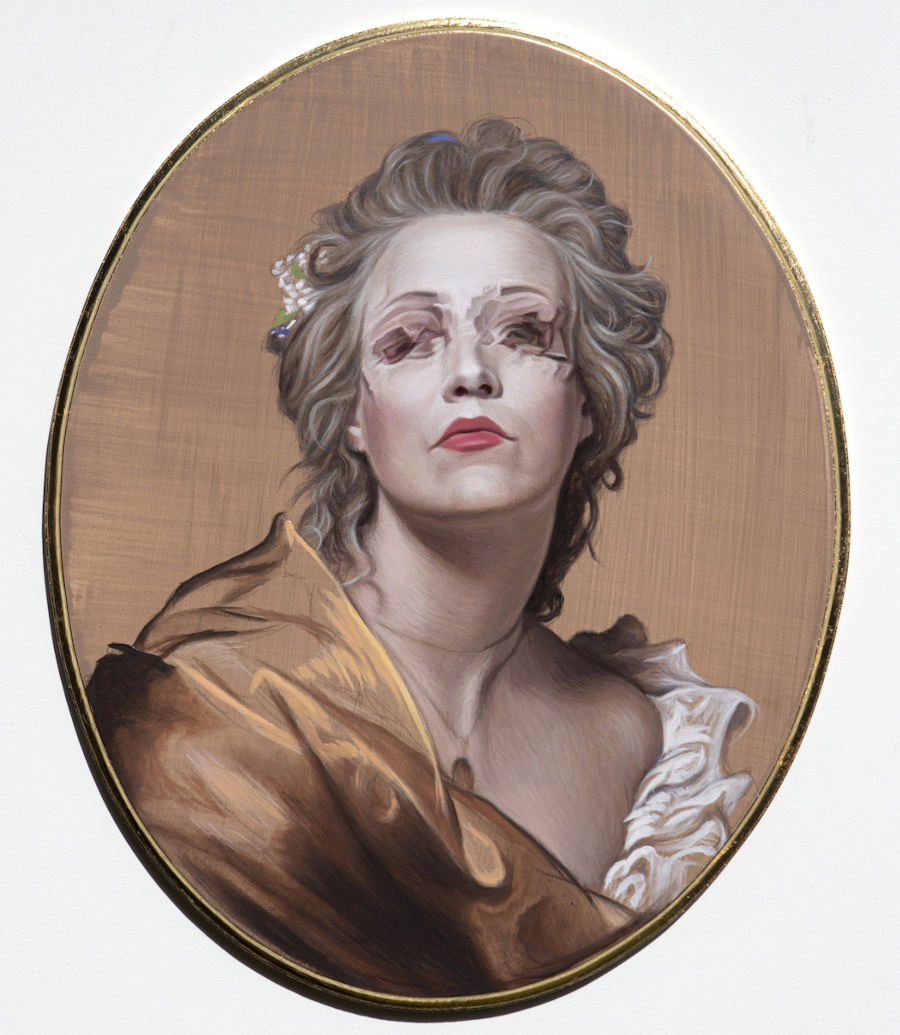
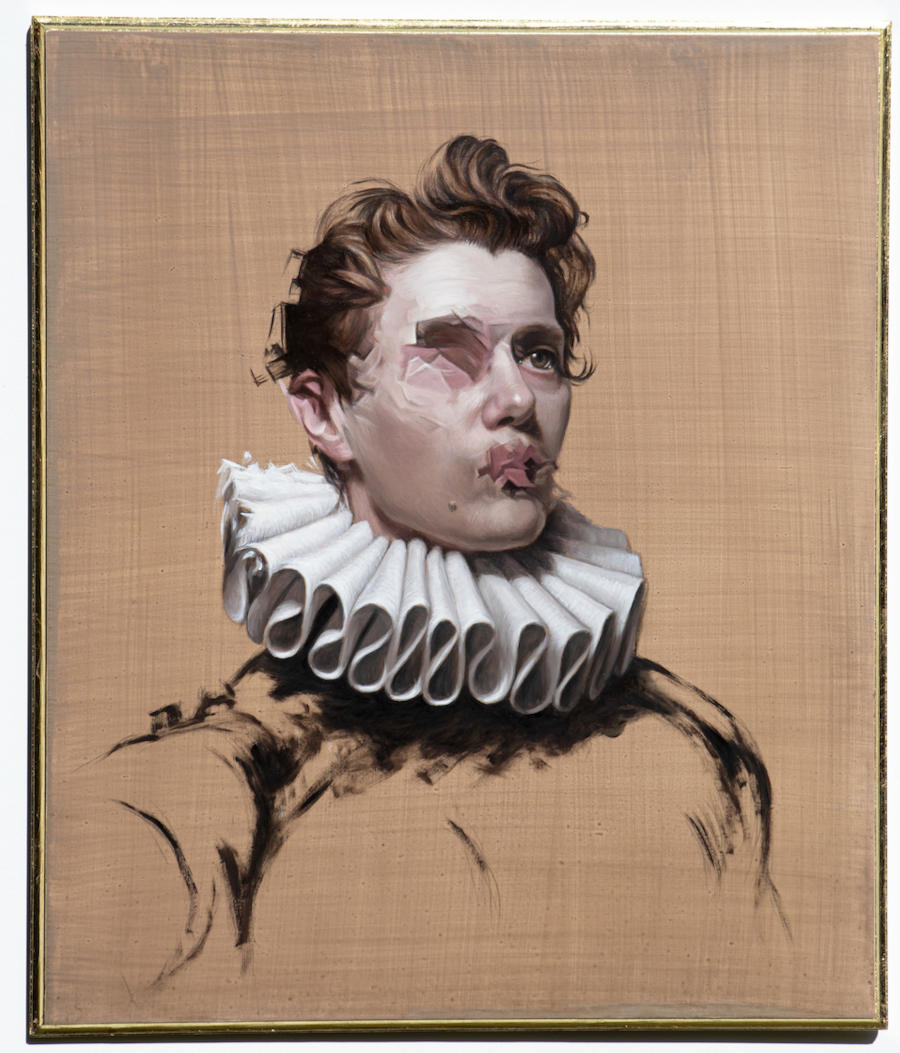
About Dorothy Circus Gallery
Dorothy Circus Gallery was founded by Alexandra Mazzanti and her mother Maddalena Di Giacomo, who played a pivotal role in the conception and branding of the gallery. With its Rome and London branches, the spaces are dedicated to the figurative avant-gardes in contemporary art. The gallery brings together international established and up and coming artists selected for their compelling visual languages from the worlds of Painting, Sculpture, Street Art and Photography, and their intriguing correlation to Pop iconography, New Surrealism and Magic Realism.
Curating thought-provoking exhibitions, educational initiatives and engaging events, the owner Alexandra Mazzanti is constantly expanding the gallery presence and influence on the global art scene. The Gallery works closely with artists and organizations to create meaningful dialogues, contributing to the development of a society based on an ethical commitment.
Tapping in the subconscious and challenging the everyday, Dorothy Circus Gallery focuses on bringing back the surreal elements of art, an Art that in the words of André Breton could “incite passers-by to dream in the shadow of reality.”
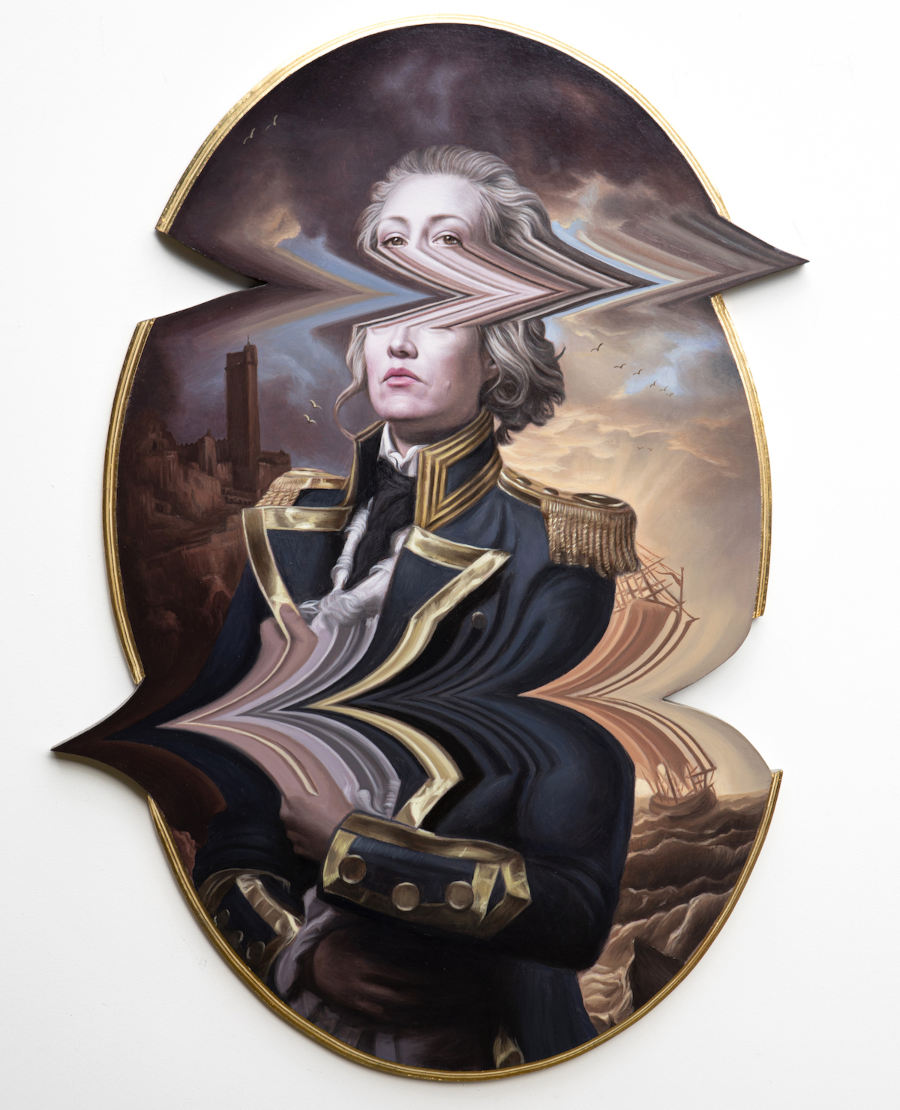

All images shown are courtesy of Dorothy Circus Gallery and the Artist.


